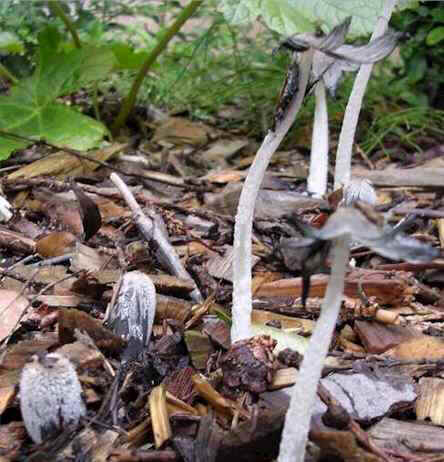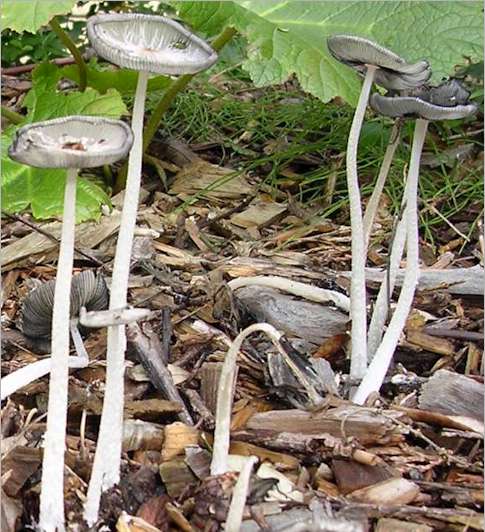..
COPRINUS SPECIES There are many species of Coprinus, collectively known as the "Ink Caps", because as the fruitbodies mature they senesce from the edge of the cap inwards, dripping a black, inky fluid containing the spores. This feature is said to ensure that subsequent spores can fall freely and be dispersed. Coprinus species are very common and tend to be short-lived, growing rapidly on a range of substrates such as straw, woody substrates and dung. However, in contrast to many other toadstools the Coprinus spp. tend to be very short-lived - they develop rapidly and senesce equally rapidly, often disappearing within a few days. The following images illustrate several aspects of these fungi, but one of the most notable features is that the stipe (stalk) elongates very rapidly at maturity, often extending to 5 or 6 times the original length and then flopping onto the ground (see Figures 1 and 2). This rapid elongation has been shown to involve intercalary growth - the hyphae composing the stalk undergo enzymatic digestion, allowing the pre-formed hyphae to extend rapidly within a few hours. This is in stark contrast to the normal apical growth of fungal hyphae. The same phenomenon can be reproduced in laboratory conditions by cutting a short section of the stalk and incubating it overnight in a humid environment.
Fig 1. Fruitbodies of Coprinus lagopus, emerging among woodchips in a nutrient-rich compost. Note the two young fruitbodies with a white powder-like covering of scales at the lower left corner of this image. Within 24 hours these fruitbodies had extended several cemtimetres and were senescing rapidly. [© Jim Deacon]
Fig 2. Fruitbodies of Coprinus lagopus that extended overnight in field conditions. Some of them have collapsed and fallen over, unable to support themselves. [© Jim Deacon].
Fig 3. A cluster of young fruitbodies of Coprinus micaceus emerging from a log. The gills are initially white but rapidly mature and become brown, then black. [© Jim Deacon]
Fig 4. Coprinus comatus, commonly known as "Lawyer's Wig" or "Shaggy Cap". Like many other Coprinus species, this elegant fungus is short-lived. It rapidly extends from its juvenile form to mature form and then senesces from the base of the cap upwards and disappears within a few days. |



